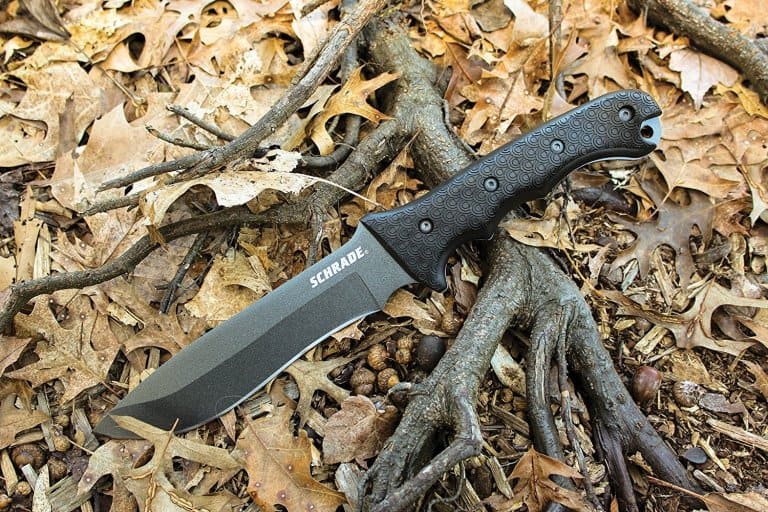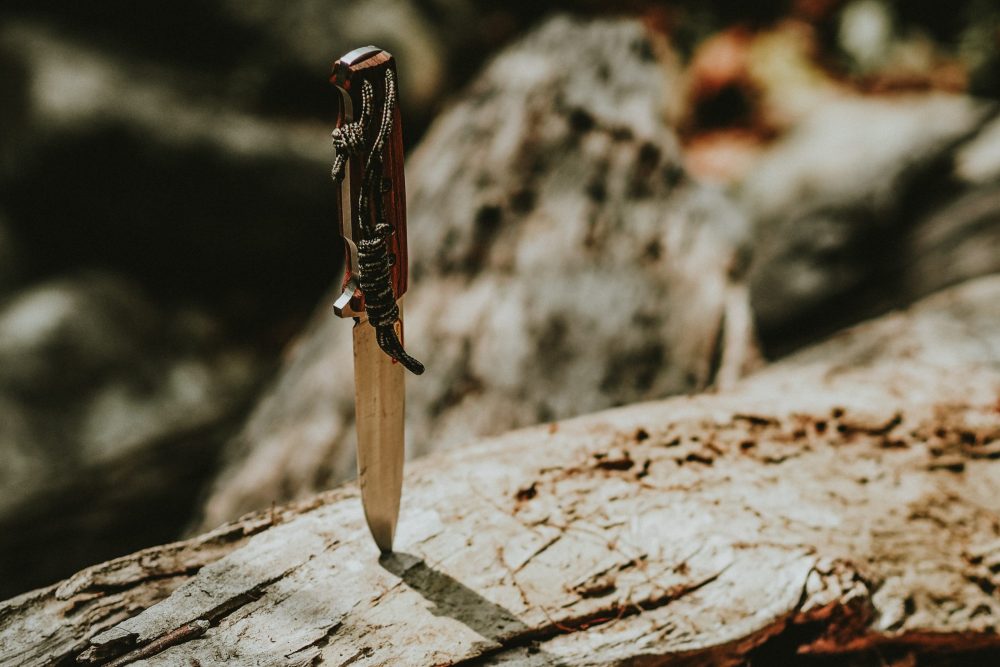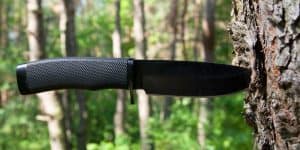Table of Contents
What is Survival?
We all know what survival is, it is an animal-like instinct we all have within us which drives us to fight for our life. However, what survival means to each person is entirely different depending on their living conditions and lifestyle. For example, survival has a completely different meaning to a white, male professional than it does to a single mother living in a developing nation with her children.
When someone makes this statement: “I was only doing what I had to do to survive” it has a variety of different meanings. Usually, this is a statement one makes when they are feeling humble about something they have done to save someone else. Such as a pilot who is forced to land a disabled plane safely in order to save the crew and passengers. Making this statement is a way to downplay their actions; making it appear what they did was about survival.
As mentioned previously, survival is a basic need; to survive is what you do to continue living. It is not intended to be a way of life; one should not live their entire life in survival mode. Survival to an animal is their way of life. They hunt their food, produce offspring, and protect themselves against the higher food chain. For a human, survival should only be a temporary state. Survival is about learning how to get by when going off the grid or better yet in the unfortunate event of a tragic event. Now that we understand the basics of survival, we move on to the next section of this article–the tools needed to aid in survival
What is a Survival Knife?
When you wake up each morning you never know what will happen. What appears to be the start of a beautiful day can change dramatically at the drop of a hat. You never know when a perfectly safe situation will turn into something that is potentially dangerous and harmful.
For this reason, the right survival tools are very essential. The survival tool at the top of everyone’s list should be a survival knife. That knife will have the capacity to handle a multitude of tasks.
The intention of this article is to make you aware of all the unique abilities a survival knife needs to be equipped with. The following features are what makes a survival knife much more efficient than the average knife.
A survival knife is a tool that enables the user to survive a life or death situation. Some of these functions include the following:
- Cutting or slicing
- Digging
- Splitting
- Self defense
- A tool for first aid
- Preparing food
- Building of shelter
- Starting/making a fire
- A weapon used to hunt with
- Tool for prying objects
- Signaling for aid
- As a hammer
- Even a somewhat screwdriver
When you are shopping around for the right survival knife, the best advice is to keep it small and simple. Forget about those fancy movie props. What a survival knife should be is simple and skillfully crafted. How it functions is always much better than how it looks.
In addition to performing well, you need to ensure the survival knife you buy has the following important features.
Features of a Survival Knife
The first feature you need to address is the size. Yes, size does matter. The size of the blade should not be too large, if it is you stand the chance of losing certain imperative skills, such as carving. On the other hand, the blade cannot be too small. With a blade that is too small you will not be able to adequately chop or split wood or other items.
The ideal size of a blade for a survival knife should be at no smaller than 9 but not larger than 11 inches. If you try to stick with a blade within this size range you will not be compromising any of your skills or abilities.
The next feature that is important with a survival knife is to get a fixed blade. The reason for this is that foldable blades run the risk of the handle breaking. Or, worse yet, the springs and/or joints may break while batoning. The fixed blade is recommendable when looking for a survival knife because it is stable and more durable than any of the other options.
Another excellent feature is that the blade be “full tang”. What this means is that the blade of the knife and the handle are constructed of one continuous piece of metal. This way of constructing a survival knife ensures strength and durability. If the knife is “half-tang” the blade only goes halfway down the handle. It is obviously apparent that a full or half tang blade be a fixed blade for the most efficiency.
The material that makes the handle of a knife is another important feature. Some of the most common survival knives have handles that are constructed of man-made, synthetic rubber–also known as Kratan. They can also be derived from a molded plastic material, leather (piled leather washers), grivory ( polymer-type nylon) hytrel (thermoplastic, polyester elastomer), and nylon resin which is known as zytel. Then there are knife brands called skeletons; these “skeletons” feature a solid blade at the end (metal tang) which serves as the handle.
The main thing to look for when shopping for a survival knife is that the handle fits snugly in your hand. You want to have a secure grip, one that is solid and non-slip; this grip should not be compromised even if you become sweaty or wet.
In addition, the hilt and pommel should be wider than the handle. This feature advances your grip for chopping and stabbing objects. Also, the pommel needs to be flat in order to double up and behave as a makeshift hammer. You would not want it to slip while in the business of doing some serious chopping.
The Best materials for a Survival Knife
There are two basic materials which construct the perfect blade of a survival knife. These materials are carbon and stainless steel. This material permits the knife a hardness that is also flexible and durable. Enabling it to firmly take hold of the object at hand and get the job done efficiently. The process of annealing the metal is what makes the perfect knife blade. Annealing metal is another term for treating metal with heat.
Keep in mind that even a stainless steel blade will rust if not cared for properly. Some knives are constructed of rust-free metal; however, they are not always tool quality and probably won’t last very long.
Carbon Steel vs Stainless steel
Carbon Steel and Stainless Steel are the most commonly used materials for the production of knife blades. The reason these materials are most popular, is because they both hold properties of strength and durability. A stainless steel blade has a chromium oxide layer built within it, this material is not found in the carbon steel varieties. Stainless steel has properties to prevent it from corrosion unlike the carbon steel ones.
In terms of consumer products, the preference is always stainless steel. This type of steel can be used for decoration. Whereas, carbon steel is more for production and manufacturing, typically used as a material in products that aren’t for show. Stainless steel is less thermally conductive than carbon steel.
So, how do you tell the difference between stainless and carbon steel? All steel is constructed as alloy using iron and carbon minerals.
Stainless steel is made out of metal with a high chromium content. This creates an invisible shield deterring the creation of corrosion and stains.
Whereas, carbon steel contains more carbon. This additional carbon content gives the steel a decrease in its melting point. It also makes it stronger, more durable, and has a more evenly distribution of heat. When steel has a higher amount of carbon it also gives an advancement to its hardness.
Carbon Steel
This is steel made with carbon as its primary ingredient. As carbon is cheaper than steel, a blade made with carbon must be cheaper than a stainless steel blade. However, this could not be further from the truth. Knife blades that have a high carbon content have razor sharp blades.
Carbon steel is one of the best materials used for making knives. Many survivalists trust blades with this material because of its strength and durability. Carbon steel blades produce greater sparks this makes it a great tool for survival.
However, as with most everything there are always some disadvantages. Carbon steel is brittle, making it susceptible to corrosion. For this reason, it requires a conscientious schedule for maintenance. Part of this maintenance plan requires the blade to be sharpened daily. In addition, you need to store the knife in an appropriate place, oiling and honing it daily. By doing this, you ensure your survival knife with a carbon blade will perform at peak performance.
Stainless steel
This type of steel has a chromium oxide layer built within it. Because of this layer the surface of the blade is strong enough to prevent oxidation for an extremely long period of time. Stainless steel blades are mostly used to work in a corrosive environment and are a great choice.
Similar to carbon steel, there are disadvantages to stainless steel as well. Like carbon steel, stainless steel is not easy to sharpen because of this oxide layer. Stainless steel is more expensive because of the use of chromium or nickel in the manufacturing of it.
The primary difference between carbon and stainless steel is the alloy content. There is 10.5 percent alloy contained in carbon steel. Whereas, stainless steel has 10.5 percent or more of chromium content within it.
Finish and Coatings
This final step in the creation of the perfect survival knife blade is the finish and coating. This may seem like it is purely aesthetic; however, it is this step that gives the entire knife a quality and superior look.
Some common blade finishes are:
- Bead Blasting– This type of finishing does not always involve the use of beads. Sandblasting does a magnificent job of smoothing, cleaning, and shaping the hard surfaces. This process is similar to when you use sandpaper on your knife–only smoother. The smaller the beads, the smoother your surface will be. It is an excellent method of removing corrosion, rust, and paint. This type of finish results in a smooth, even, matte grey blade. This is an excellent finish for when you are trying to stay hidden because the blade will leave any shiny reflection of your location. However, there is one disadvantage to this type of finish. The micro abrasions that were created by the high pressure blasting leaves the blade comprised and may become rusted or corroded if exposed to wet areas.
- Brushed finishes- An abrasive wheel is what makes this finish. This wheel can create a finish similar to a satin one yet at a less costly price. This type of finish can be mixed with other finishes, such as the hand-satin and brushed ones. The wheel designs lines that are in a parallel and fine pattern. The luster of this finish is muted and it still possesses properties that create a reflection. However, there is a con to this type of finish. The steel’s corrosion properties are greatly reduced as a result of the abrasions that were created by the wheel. This makes the knife blade likely to rust or corrode.
- Satin Finish- This is a finish that gives a knife blade a semi-shiny appearance. This finish is somewhat similar to the bead blasting matte and the mirror finishes. Of all the types of finishes on knife blades, this one is the most commonly used. The lines from buffing are made visible, this aids in showing the blades bevels. The reason these buffing lines can be seen is that the blade was sanded in one direction with a very fine abrasive sandpaper. The lines appear more even the finer abrasive material you use, this is what creates the satin appearance. This type of finish requires great skill and is completed by hand. The reflective properties are reduced with a satin finish, therefore, cutting down on any glare. Knives with a satin finish are more costly due to the extensive time it takes to create the finish–all by hand.
- Mirror Finish– This is another finish that is completed by hand. The blade is polished to where it becomes very reflective–hence, the mirror name. Because of the extensive work that is all done by hand, these knives are going to be more costly. However, if you want one that is similar to the mirror finish but less costly there is a tumbled finish which is similar to the mirror. The tumbled finish isn’t the same quality, or as reflective, but it will give you the look you desire for less cash. Knives with a mirror finish are mostly for show. This finish is very smooth, making cutting and cleaning extremely easy.
Conclusion
You will discover that stainless steel and carbon steel blades are the most useful and powerful. Both have excellent features, making it difficult to choose which one you prefer. The stainless blades are usually what is most preferred due to their extreme durability and resistance to corrosion. In addition, a stainless steel blade is very sharp, if this is what you want in a knife, then the stainless steel knife is your knife. The carbon steel blades are easy to sharpen, but require a great deal of care. If you do not mind the additional upkeep, then a carbon blade knife might be right for you.
When shopping for a survival knife, there is so much to consider. It is not only the material of the blade and handle that is important it also must be resistant to excessive heat, water, and the elements of the weather. The blade’s finish and coating is the finishing touch to the perfect survival knife.
The intention of this article is to give the person shopping for a survival knife all the pertinent information needed to buy a survival knife that will be effective in the event of an emergency.



